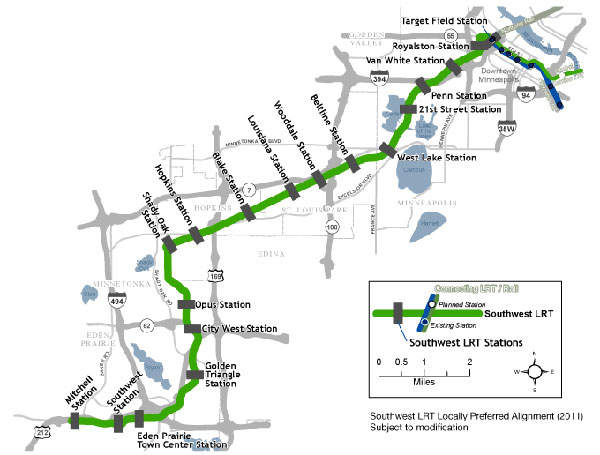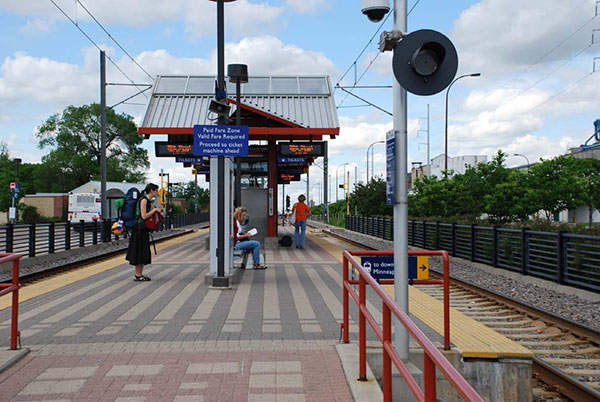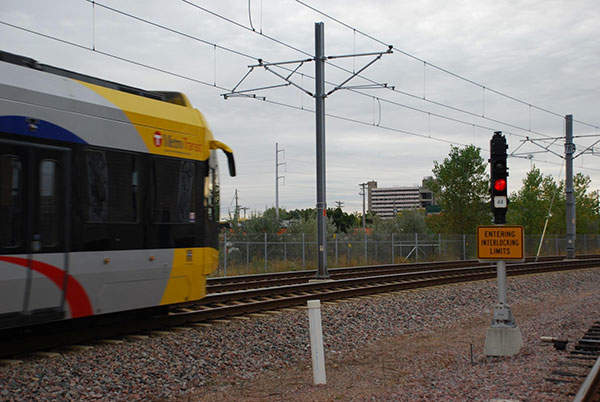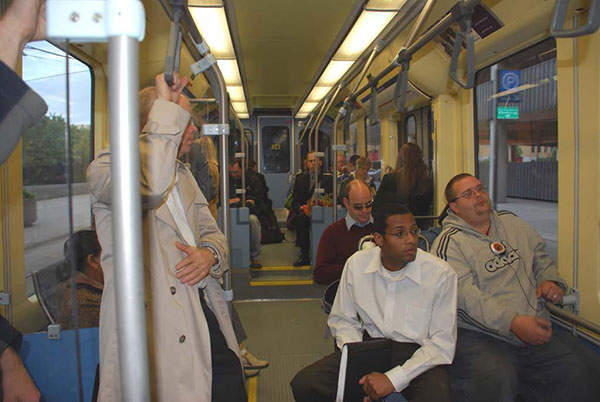The Southwest Light Rail Transit (LRT) project by the Metropolitan Council of Minnesota will be an extension of the Green Line (Central Corridor LRT), which entered service in June 2014.
The $2.003bn Southwest LRT project is envisioned as part of the development of the integrated transit network in the region. It will serve the south-western suburban cities, including St Louis Park, Hopkins, Minnetonka and Eden Prairie.
While interlining with the upcoming Central Corridor LRT, the project will provide connections to the Hiawatha LRT line, the Northstar Commuter Rail line and a variety of major bus routes.
The groundbreaking ceremony was held in November 2018 and heavy construction for the project is expected to start in 2019. Construction will continue until 2022 and the services are expected to begin by 2023.
The project is expected to generate 7,500 construction jobs with approximately $350m payroll.
Southwest LRT timeline
Feasibility studies of the Southwest LRT project were carried out between 2002 and 2005. The alternatives analysis of the project was complete by 2010. The Metropolitan Council applied in the same year to the Federal Transit Administration (FTA) for approval to begin preliminary engineering of the project. The FTA granted approval in September 2011.
The Draft Environmental Impact Statement (Draft EIS) of the project was released in October 2012. Preliminary engineering of the project began in January 2013 with the hiring of consultants and has now been completed.
The Metropolitan Council approved the proposed project scope and budget in April 2014, which was reviewed by Hennepin County and the cities of Minneapolis, St Louis Park, Hopkins, Minnetonka and Eden Prairie for approval.
The final EIS was published in May 2016 and the FTA issued the record of decision on the project in July 2016.
The Southwest LRT project entered the engineering phase in December 2016. The project received approval for construction from the federal government in November 2018.
Southwest LRT route and stations
Southwest LRT is proposed to be a 14.5-mile (23.3km) line running from downtown Minneapolis through the suburban cities of St Louis Park, Hopkins, Minnetonka, and Eden Prairie in the south-western region of Minnesota.
The project will connect with the existing Blue Line (Hiawatha LRT) near Target Field. It will also be connected with the upcoming Blue Line (Central Corridor LRT), which will provide easy accessibility to places such as the University of Minnesota, state Capitol and downtown St Paul.
Southwest LRT will have 16 stations starting with Target Field station in downtown Minneapolis and ending with Michell station. Four stations will be located in Eden Prairie and five in Minneapolis. Hopkins and St Louis Park will have three stations each, while the proposed Opus station will be built in Minnetonka.
Southwest LRT rolling stock and ridership
High-capacity vehicles with seating capacity of 66 and standing room for more than 60 passengers will be operated on the Southwest LRT. The light rail vehicles will run on electricity and will be equipped with a quick acceleration and braking system.
Vehicles on the new line will be in service for 21 hours a day. Travel time between the two ends of the line will be approximately 38 minutes. Ridership on the new LRT is expected to be 30,000 a day and 10 million a year by 2030.
Related project
Central Corridor, Minnesota, United States of America
The Central Corridor is a light rail transit system being developed in Minnesota, the US. It is the second light rail transit (LRT) in Minnesota – the first one being the Hiawatha line – and is the third rail line planned for Minneapolis. The transit system will connect Minneapolis and Saint Paul in Minnesota. The project was planned in order to reduce regular congestion in the region and to provide better access to automobile traffic.
Financing for Southwest LRT
The project is planned to be funded 10% by the State of Minnesota, 30% by the Counties Transit Improvement Board (CTIB), 10% by the Hennepin County Regional Railroad Authority (HCRRA), and 50% by the FTA under the New Starts programme.
Funds for the preliminary engineering of the project, which was estimated to be $93m, were provided 20% by Minnesota Government, 20% by HCRRA, and 60% by CTIB.
The full funding grant agreement (FFGA) for the project is expected to be awarded in 2019. The federal government will pay $929m, which is 46% of the project’s total cost, as part of the FFGA.
Contractors involved
Kimley-Horn was awarded a $16.8m contract in December 2012 to conduct preliminary engineering on the eastern half of the proposed LRT project. AECOM was awarded a contract of the same value for the preliminary engineering of the western half of the LRT line.
Lunda/McCrossan secured an $800m (£593m) contract from the Metropolitan Council in November 2018 to carry out construction activities of the project. The contract includes construction of 23.3km of double track, 16 stations, railway tracks, and other support facilities.
The Metropolitan Council awarded a $118m contract to Siemens to manufacture 27 LRT vehicles for the Southwest LRT in October 2016. Delivery of the first vehicle is scheduled for 2019.







